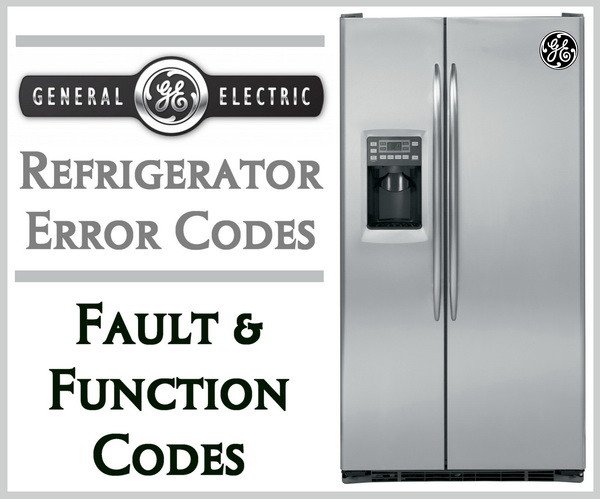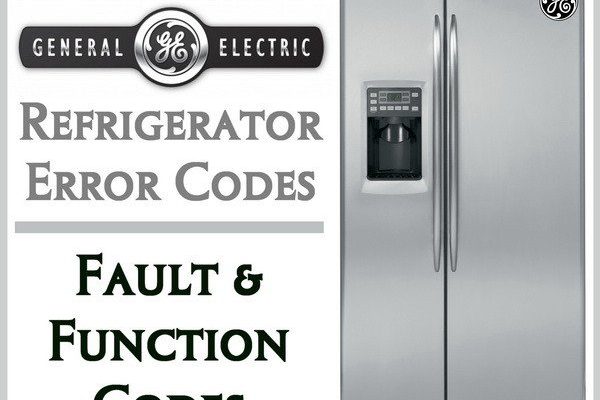
So, what exactly is this “LE” error code all about? Well, in simple terms, the LE error code on a GE refrigerator typically indicates a problem with the motor that controls the fan. This fan is crucial because it helps circulate the air inside the fridge, keeping everything nice and cold. If the fan isn’t working properly, your food might not stay as fresh, and nobody wants soupy ice cream or spoiled milk! Hence, it’s important to address this issue to keep your fridge—and your peace of mind—in tip-top shape.
You might be wondering, “Is it safe to keep using the fridge when this error code appears?” The answer isn’t cut and dry because it depends on the specific situation. While your fridge won’t instantly turn into an ice-less box, ignoring the error for too long can lead to inefficiency and potentially spoil your food. Let’s dig a little deeper into what you should do when this error code pops up.
Understanding the GE Refrigerator LE Error Code
First things first—what exactly does the LE code mean? Think of your refrigerator like a well-oiled machine with several crucial parts working together. The LE code usually indicates an issue with the refrigerator’s fan motor. Imagine a ceiling fan on a hot day; if it suddenly stops, the room gets stuffy, right? Similarly, the fan motor in your fridge helps circulate cool air, ensuring everything stays chilled evenly.
When the fan motor encounters a problem, it could be due to electrical glitches, motor malfunctions, or even just a blockage caused by dust or debris. It’s like trying to run with a stone in your shoe—it’s not going to be smooth sailing! The fan might start and stop intermittently, or it might stop working altogether, leading to uneven cooling inside the fridge.
Why is this important? Well, if the air inside the refrigerator isn’t circulating properly, some areas might get warmer than they should. This can lead to spoilage of perishable items, and let’s face it, nobody wants to deal with the aftermath of a sour milk disaster. So, while it’s not an immediate emergency, it’s certainly something you’d want to address sooner rather than later.
What to Do When You See the LE Code
Alright, so you’ve spotted the dreaded LE code on your display. What’s next? Don’t panic—there are steps you can take to figure out what’s going on and possibly fix the issue yourself. It’s kind of like being an amateur detective searching for clues. Start by checking the obvious: Is there anything blocking the air vents inside the fridge? Sometimes misplaced items can obstruct airflow without us even realizing it.
Next, consider the fridge placement. Is it too close to the wall, hindering ventilation? Sometimes the solution is as simple as pulling the appliance forward a little. However, if you’ve checked these factors and the code persists, it might be time to dive deeper. Press and hold the reset button on your fridge to see if it clears the error. It’s like rebooting a computer that’s acting up—a simple reset can do wonders.
If these steps don’t work, it might be time to consult the owner’s manual or call in a professional. While DIY fixes can be satisfying, some problems really do need an expert touch. A qualified technician can diagnose the issue accurately and suggest the best course of action, ensuring your fridge is back to working order without unnecessary guesswork.
Preventing Future Error Codes
Now, let’s talk about prevention. As the saying goes, “An ounce of prevention is worth a pound of cure.” Keeping your refrigerator running smoothly involves regular maintenance. Think of it like giving your car an oil change—it’s essential for longevity. Make sure to clean the coils behind or beneath the unit every six months. This keeps the cooling system operating efficiently and can prevent future errors.
Ensure there’s adequate space around the fridge for air circulation. Avoid overloading it with food, as that can block air vents and strain the fan motor. Taking a few moments to organize your fridge can go a long way in maintaining an even temperature, and it certainly beats dealing with spoiled groceries!
Lastly, keep an ear out for unusual noises. Sometimes, the first sign of trouble is an odd noise coming from the back of the unit. Addressing these small signs early can prevent them from developing into major issues down the road. By staying proactive, you can keep your fridge—and everything inside it—cool and fresh for years to come. So, next time you spot an error code, you’ll be ready to handle it like a pro!
